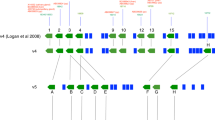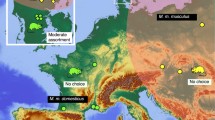Abstract
Urine from the house mouse, Mus musculus domesticus, contains a high concentration of major urinary proteins (MUPs), which convey olfactory information between conspecifics. In wild populations, each individual expresses a different pattern of around 8 to 14 electrophoretically separable MUP isoforms. To examine whether other Mus species express MUPs and exhibit a similar level of individual heterogeneity, we characterized urinary proteins in urine samples from an aboriginal species, Mus macedonicus, captured from different sites in Turkey. Anion exchange chromatography and electrospray ionization mass spectrometry demonstrated that M. macedonicus urine contained a single major peak of mass 18,742 Da, and in contrast to M. m. domesticus, all individuals were the same. The M. macedonicus masses were not predicted from any known MUP gene sequence. Endoproteinase Lys-C (Lys-C) digestion of the purified M. macedonicus urinary protein followed by matrix assisted laser desorption time of flight (MALDI-TOF) mass spectrometry demonstrated that it shared considerable, but not complete, sequence homogeneity with M. m. domesticus MUPs. Three M. macedonicus Lys-C peptides differed in mass from their M. m. domesticus counterparts. These three peptides were further characterized by tandem mass spectrometry. The complete sequences of two were determined, and in conjunction with methyl esterification, the amino acid composition of the third was inferred, and the sequence narrowed down to three permutations. The complete M. macedonicus sequence contained a maximum of seven amino acid substitutions, discernible by tandem mass spectrometry, relative to a reference M. m. domesticus sequence. Six of these were on the surface of the molecule. Molecular modeling of the M. macedonicus sequence demonstrated that the amino acid substitutions had little effect on the tertiary structure. The differences in the level of heterogeneity between the two species are discussed in relation to their environment and behavior. In addition, the differences in protein structure allow speculation into molecular mechanisms of MUP function.









Similar content being viewed by others
References
Adams, P. and Sawyer, L. 1990. Structure of rodent urinary proteins. Biochem. Soc. Trans. 18:936–937.
Armstrong, S. D., Robertson, D. H. L., Cheetham, S. A., Hurst J. L., and Beynon, R. J. 2005. Structural and functional differences in isoforms of mouse major urinary proteins: a male-specific protein that preferentially binds a male pheromone. Biochem. J. 391:343–350.
Bacchini, A., Gaetani, E., and Cavaggioni, A. 1992. Pheromone binding proteins in the house mouse Mus musculus. Experientia 48:419–421.
Barnard, C. J., Hurst, J. L., and Aldhous, P. 1991. Of mice and kin: the functional significance of kin bias in social behaviour. Biol. Rev. 66:379–430.
Berry, R. J. 1981. Population dynamics of the house mouse. Symp. Zool. Soc. Lond. 47:395–425.
Beynon, R. J. and Hurst, J. L. 2004. Urinary proteins and the modulation of chemical scents in mice and rats. Peptides 25:1553–1563.
Beynon, R. J., Veggerby, C., Payne, C. E., Robertson, D. H., Gaskell, S. J., Humphries, R. E., and Hurst, J. L. 2002. Polymorphism in major urinary proteins: molecular heterogeneity in a wild mouse population. J. Chem. Ecol. 7:1429–1446.
Boursot, P., Auffray, J.-C., Britton-Davidian, J., and Bonhomme, F. 1993. The evolution of house mice. Annu. Rev. Ecol. Syst. 24:119–152.
Bronson, F. H. 1979. The reproductive ecology of the house mouse. Q. Rev. Biol. 54:265–299.
Cucchi, T., Vigne, J.-D., and Auffray, J.-C. 2005. First occurrence of the house mouse (Mus musculus domesticus Schwarz & Schwarz), 1943 in the Western Mediterranean: a zooarchelogical revision of subfossil occurrences. Biol. J. Linn. Soc. 84:429–445.
Darwish Marie, A., Veggerby, C., Robertson, D. H., Gaskell, S. J., Hubbard, S. J., Martinsen, L., Hurst, J. L., and Beynon, R. J. 2001. Effect of polymorphisms on ligand binding by mouse major urinary proteins. Protein Sci. 10:411–417.
Evershed, R. P., Robertson, D. H., Beynon, R. J., and Green, B. N. 1993. Application of electrospray ionization mass spectrometry with maximum-entropy analysis to allelic ‘fingerprinting’ of major urinary proteins. Rapid Commun. Mass Spectrom. 10:882–886.
Finlayson, J. S., Asofsky, R., Potter, M., and Runner, C. C. 1965. Major urinary protein complex of mice: origin. Science 149:981–982.
Flower, D. R., North, A. C. T., and Attwood, T. K. 1993. Structure and sequence relationships in the lipocalins and related proteins. Protein Sci. 2:753–761.
Frynta, D. and Čiháková, J. 1996. Neutral cage interactions in Mus macedonicus (Rodentia: Muridae): an aggressive mouse? Acta Soc. Zool. Bohem. 60:97–102.
Frynta, D., Slábová, M., Váchová, H., Volfová, R., and Munclinger, P. 2005. Aggression and commensalisms in house mouse: a comparative study across Europe and the Near East. Aggress. Behav. 31:283–293.
Hurst, J. L. 1987. The functions of urine marking in a free living population of house mice. Anim. Behav. 35:1433–1422.
Hurst, J. L. and Beynon, R. J. 2004. Scent wars: the chemobiology of competitive signalling in mice. Bioessays 26:1288–1298.
Hurst, J. L., Robertson, D. H. L., Tolladay, U., and Beynon, R. J. 1998. Lipocalins in mouse urine provide a slow release mechanism for olfactory signals. Anim. Behav. 55:1289–1297.
Hurst, J. L., Payne, C. E., Nevison, C. M., Marie, A. D., Humphries, R. E., Robertson, D. H. L., Cavaggioni, A., and Beynon, R. J. 2001. Individual recognition in mice mediated by Major Urinary Proteins. Nature 414:631–634.
Hurst, J. L., Thom, M. D., Nevison, C. M., Humphries, R. E., and Beynon, R. J. 2005. MHC odours are not required or sufficient for recognition of individual scent owners. Proc. R. Soc. Lond. B Biol. Sci. 272:715–724.
Ivantcheva, A. and Cassaing, J. 1999. Male–female interactions and socio-sexual isolation of Mus spicilegus toward two other species of east-European mice, M. macedonicus and M. m. musculus. C. R. Acad. Sci. III 322:597–605.
Krizova, H., Zidek, L., Stone, M. J., Novotny, M. V., and Sklenar, V. 2004. Temperature-dependent spectral density analysis applied to monitoring backbone dynamics of major urinary protein-I complexed with the pheromone 2- sec-butyl-4,5-dihydrothiazole. J. Biomol. NMR 4:369–384.
Kuser, P. R., Franzoni, L., Ferrari, E., Spisni, A., and Polikarpov, I. 2001. The X-ray structure of a recombinant major urinary protein at 1.75 A resolution. A comparative study of X-ray and NMR-derived structures. Acta. Crystallogr. D. Biol. Crystallogr. 57:1863–1869.
Malone, N., Payne, C. E., Beynon, R. J., and Hurst, J. L. 2001. Social status, odour communication and mate choice in wild house mice, pp. 217–224, in A. Marchlewska-Koj, D. Muller-Schwarze, and J. Lepri (eds.). Chemical Signals in Vertebrates. Plenum Press, New York.
Novotny, M. V., Ma, W., Wiesler, D., and Zidek, L. 1999. Positive identification of the puberty-accelerating pheromone of the house mouse: the volatile ligands associating with the major urinary protein. Proc. R. Soc. Lond. B Biol. Sci. 266:2017–2022.
Patris, B. and Baudoin, C. 1998. Female sexual preferences differ in Mus spicilegus and Mus musculus domesticus: the role of familiarization and sexual experience. Anim. Behav. 56:1465–1470.
Pes, D., Robertson, D. H. L., Hurst, J. L., Gaskell, S., and Beynon, R. J. 1999. How many major urinary proteins are produced by the house mouse Mus domesticus?, pp. 149–162, in R. E. Johnston, D. Müller-Schwarze, and P. W. Sorensen (eds.). Advances in Chemical Signals in Vertebrates 9. Plenum Press, New York.
Robertson, D. H. L., Beynon, R. J., and Evershed, R. P. 1993. Extraction, characterisation and binding analysis of two pheromonally active ligands associated with major urinary protein of house mouse. J. Chem. Ecol. 19:1405–1416.
Robertson, D. H. L., Evershed, R. P., Cox, K., Gaskell, S., and Beynon, R. J. 1996. Characterisation of molecular heterogeneity in the major urinary proteins of the house mouse Mus musculus. Biochem. J. 315:461–466.
Robertson, D. H., Hurst, J. L., Bolgar, M. S., Gaskell, S. J., and Beynon, R. J. 1997. Molecular heterogeneity of urinary proteins in wild house mouse populations. Rapid Commun. Mass Spectrom. 11:786–790.
Sampsell, B. M. and Held, W. A. 1985. Variation in the major urinary protein multigene family in wild-derived mice. Genetics 109:549–568.
Shevchenko, A., Sunyaev, S., Liska, A., Bork, P., and Shevchenko, A. 2003. Nanoelectrospray tandem mass spectrometry and sequence similarity searching for identification of proteins from organisms with unknown genomes. Methods Mol. Biol. 211:221–234.
Silver, L. M. 1995. Mouse Genetics, Concepts and Applications. Oxford University Press, Oxford, UK.
Suzuki, H., Shimada, T., Terashima, M., Tsuchiya, K., and Aplin, K. 2004. Temporal, spatial, and ecological modes of evolution of Eurasian Mus based on mitochondrial and nuclear gene sequences. Mol. Phylogenet. Evol. 33:626–646.
Timm, D. E., Baker, L. J., Mueller, H., Zidek, L., and Novotny, M. V. 2001. Structural basis of pheromone binding to mouse major urinary protein (MUP-I). Protein Sci. 10:997–1004.
Veggerby, C., Payne, C. E., Robertson, D. H. L., Gaskell, S. J., Humphries, R. E., Hurst, J. L., and Beynon, R. J. 2002. Polymorphism in major urinary proteins: heterogeneity in a wild mouse population. J. Chem. Ecol. 28:1425–1440.
Acknowledgments
We are grateful for the assistance of Coskun Tez and support from the Genetics Society toward the fieldwork. The work was carried out under research grants from the Biotechnology and Biological Sciences Research Council, UK to J.L.H. and R.J.B.
In memory of J.E. Robertson, 1928–2003.
Author information
Authors and Affiliations
Corresponding author
Rights and permissions
About this article
Cite this article
Robertson, D.H.L., Hurst, J.L., Searle, J.B. et al. Characterization and Comparison of Major Urinary Proteins from the House Mouse, Mus musculus domesticus, and the Aboriginal Mouse, Mus macedonicus . J Chem Ecol 33, 613–630 (2007). https://doi.org/10.1007/s10886-006-9247-0
Received:
Accepted:
Published:
Issue Date:
DOI: https://doi.org/10.1007/s10886-006-9247-0




